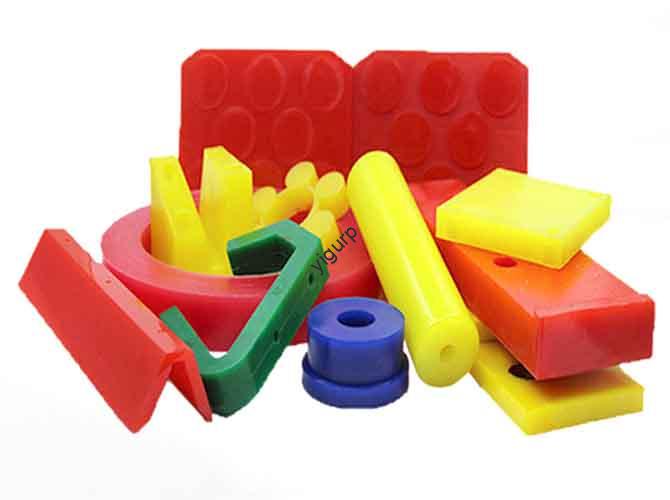When 3D printing functional parts—whether for prototypes, industrial components, or end-use products—plastic strength is the make-or-break factor for performance. A part that lacks sufficient strength may crack under load, fail in high temperatures, or wear out quickly. This article breaks down key high-strength 3D printing plastics, their strength metrics, and how to select the right one for your project.
1. Key Metrics: How to Measure Plastic Strength for 3D Printing?
Before comparing materials, it’s critical to understand the core metric used to evaluate strength: tensile strength. Measured in megapascals (MPa), it represents the maximum force a material can withstand before breaking when pulled.
| Strength Metric | Definition | Relevance for 3D Printing |
| Tensile Strength (MPa) | Force required to break a material under tension | Determines if a part can handle pulling or stretching loads (e.g., brackets, hinges) |
| Impact Resistance | Ability to absorb energy without breaking (often tested via Izod/Charpy tests) | Critical for parts that may experience shocks (e.g., tool handles, automotive components) |
| Heat Resistance (°C) | Temperature at which strength drops by 50% (HDT, Heat Deflection Temperature) | Essential for parts used in high-heat environments (e.g., engine components, 3D printer nozzles) |
2. High-Strength Plastics for 3D Printing: Comparison Table
Below is a detailed breakdown of 5 common high-strength 3D printing plastics, including their tensile strength, key features, and ideal applications. This table helps you quickly match materials to your project’s strength needs.
| Plastic Type | Tensile Strength Range (MPa) | Key Features | Ideal Applications |
| Polylactic Acid (PLA) | 40–60 | Good dimensional stability; low warping; easy to print; eco-friendly (biodegradable) | Low-load prototypes (e.g., mechanical part models, electronic device shells) |
| Acrylonitrile-Butadiene-Styrene (ABS) | 30–50 | Balanced strength & toughness; good heat resistance (~90–110°C); impact-resistant | Mid-load parts (e.g., automotive interior components, tool handles, structural frames) |
| Polycarbonate (PC) | 60–70 | Exceptional impact resistance; high heat resistance (~130–140°C); transparent | High-strength, high-heat parts (e.g., aerospace components, medical device housings, safety covers) |
| Nylon (PA) | 50–80 (varies by type) | Excellent wear resistance; fatigue resistance (handles repeated loads); good flexibility | High-wear, repetitive-load parts (e.g., gears, bearings, sports equipment components) |
| Carbon Fiber-Reinforced Composites | 100–1,000+ | Extremely high strength & rigidity; lightweight (50% lighter than steel); heat-resistant | Ultra-high-strength, lightweight parts (e.g., aerospace structural parts, high-performance automotive components, racing gear) |
3. How to Choose the Right High-Strength Plastic? (Step-by-Step Guide)
Selecting the best plastic for your 3D print isn’t just about picking the highest tensile strength. Follow this linear, question-driven process to align material choice with your project’s unique needs:
Step 1: Define Your Strength Priority
Ask: What type of stress will the part face?
- Tension (pulling): Prioritize higher tensile strength (e.g., nylon for gears, carbon fiber composites for structural parts).
- Impact (shocks): Choose materials with strong impact resistance (e.g., PC for safety covers, ABS for tool handles).
- Heat + strength: Opt for heat-resistant plastics (e.g., PC for high-temp components, carbon fiber composites for extreme environments).
Step 2: Factor in Printing Practicality
Even the strongest plastic won’t work if it’s hard to print. For example:
- Beginners: Start with PLA (low warping, easy to print) for low-load prototypes.
- Advanced users: Try PC or nylon (require heated enclosures to prevent warping) for high-strength parts.
Step 3: Balance Cost & Performance
- Budget-limited projects: PLA (low cost) or ABS (mid-cost) work for most prototypes.
- High-performance needs: Invest in carbon fiber composites (higher cost but unmatched strength-to-weight ratio) only if critical to the part’s function.
4. Yigu Technology’s Perspective on High-Strength 3D Printing Plastics
At Yigu Technology, we often advise clients to avoid over-specifying plastic strength for 3D printing. Many projects don’t need the highest-tensile materials—for example, a display prototype can use PLA (40–60 MPa) instead of carbon fiber (100+ MPa), cutting costs by 60% without sacrificing performance. For functional parts, we recommend testing with a “baseline material” first: use ABS for mid-load parts, then upgrade to PC or nylon only if real-world testing reveals strength gaps. This approach ensures clients get durable parts without unnecessary expenses, while our in-house printing team optimizes settings (e.g., layer adhesion, infill density) to maximize the chosen plastic’s strength.
FAQ: Common Questions About Plastic Strength for 3D Printing
- Q: If PLA has higher tensile strength than ABS (40–60 MPa vs. 30–50 MPa), why use ABS for functional parts?
A: While PLA has higher tensile strength, ABS offers better toughness and heat resistance. PLA becomes brittle at <0°C and softens at ~60°C, making it unsuitable for parts exposed to temperature changes or impacts—areas where ABS excels.
- Q: Can I increase the strength of a 3D-printed part without changing the plastic?
A: Yes. Adjusting printing settings like infill density (higher = stronger, e.g., 80–100% for load-bearing parts) and layer height (thinner layers = better layer adhesion) can boost strength by 20–40%. Adding reinforcement (e.g., inserting metal rods into PLA brackets) also works for high-load needs.
- Q: Is carbon fiber-reinforced plastic always the best choice for high-strength parts?
A: No. It’s overkill for low-to-mid load parts (e.g., small gears) and has drawbacks: it’s expensive, abrasive to 3D printer nozzles (requires hardened steel nozzles), and is less flexible than nylon. Use it only when you need both ultra-high strength and lightweight properties.
